Today’s major global challenges in surgical education.
Logitech MX Surgical
Logitech MX Surgical is a hybrid training system designed to elevate open surgery education through immersive, skill- and scenario-based learning. Developed in collaboration with Logitech, the project reimagines XR input tools as tactile, ergonomic surgical instruments, bridging the gap between digital simulation and real-world dexterity. Combining a set of multi-modal controllers with a variety of tactile surgical pads and mixed-reality overlays, the system enables realistic practice of core surgical skills anywhere, anytime. Grounded in field research with surgeons and educators, the concept targets residents in early specialization stages who lack access to consistent, hands-on training. By merging the portability of analog kits with scalable, feedback-rich digital systems, MX Surgical offers a more accessible, contextual, and continuous learning environment, laying the foundation for safer practices and more confident surgeons.
Project Information
Today’s surgical education is under increasing pressure. A growing demand for procedures, limited faculty and practice time, structural barriers as well as looming workforce shortages make it difficult to ensure adequate hands-on training. In reality, residents are often left with sparse opportunities for real skill-building before performing on living patients.
While simulation technologies and XR platforms are gaining ground, they often focus on scenario-based clinical decision-making and fail to provide the realism and tactile engagement needed for genuine open surgery workflow and skill development. Many rely on generic controllers that do not replicate the form, function, or feedback of actual surgical instruments, hindering crucial muscle memory and hand–eye coordination.
Logitech MX Surgical responds to this gap. Developed in collaboration with Logitech, the project explores how extended reality and tangible interaction can come together in a hybrid training system that empowers surgical learners with greater access, realism, and control. By pairing mixed-reality overlays with physical tools that mimic the feel and function of real instruments, the concept empowers residents to refine their technique, receive feedback, and train repeatedly in a safe, contextual, and accessible environment. The goal is to create a bridge between theory and practice, moving surgical training beyond static labs and into everyday spaces.
Methods
The foundation of the project lies in field-driven research and interdisciplinary collaboration. Over the course of the thesis, I conducted interviews and observational studies with surgeons, residents, and educators across hospitals in Sweden and Germany. These sessions revealed key barriers such as limited access to skill stations, minimal open surgery simulation and contextual learning, as well as a strong disconnect between digital training tools and the physicality of real procedures. In parallel, I reviewed and experimented with current XR training systems and benchmarked simulation solutions ranging from low-fidelity suturing kits to training tables, laparoscopic setups, and even robotic practices.
These findings shaped my design brief to develop a set of compact, tactile, and context-aware tools that accurately reflect surgical workflows and feedback, while remaining portable enough to support routine practice.
Early ideation focused on mapping mechanical similarities across surgical instruments, rather than designing for one specialty. Alongside the physical design, I explored how perforated surgical training pads and digital overlays could provide a hybrid experience of analog tactile dexterity training and immersive procedural learning. Feedback from Logitech and medical professionals helped refine both form and function, keeping the system grounded in real-world use while remaining adaptable.
Result
The final outcome is an engaging, phygital training kit that brings hands-on surgical practice out of stationary labs and into everyday learning contexts. The modular system is designed to be portable, subscription-ready, and scalable to remove barriers of cost, location, and equipment availability. Residents can independently and repeatedly train fundamental surgical skills as well as complex procedures at home, during hospital rotations, or in university environments.
At its core are three physical controllers, each shaped, balanced, and textured to reflect the different tools they emulate. Internally, they house sensors and resistance mechanics to replicate surgical feedback, allowing for precise training of fine-motor control. Tactile surgical pads simulate different tissue depths and grip dynamics, while MR or simpler screen-based versions provide contextual scenarios and visual immersion. A digital training platform objectively tracks user performance, supports feedback loops, adjusts difficulty, and facilitates remote mentorship or self-review.
Ultimately, Logitech MX Surgical proposes a more accessible, realistic, and continuous training experience for surgical learners. By blending tactile precision with digital depth, it opens up new possibilities for personalization in surgical learning, moving beyond static curricula and toward adaptive, skill-based education. It empowers residents to build confidence, refine their technique, and enter the operating room with greater readiness and safety.
Niklas Andreasen

In collaboration with:

UID25 | Niklas Andreasen – Grad project presentation
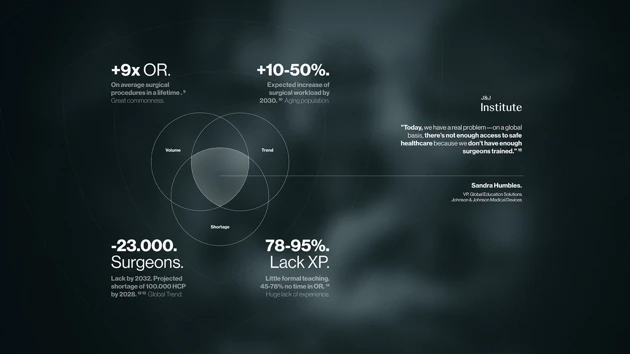
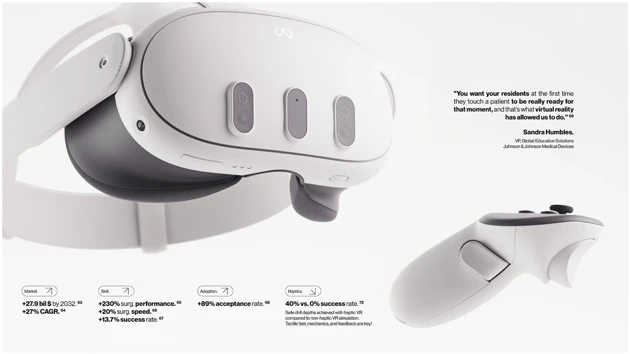
Emerging opportunities through XR combined with tactile simulation.
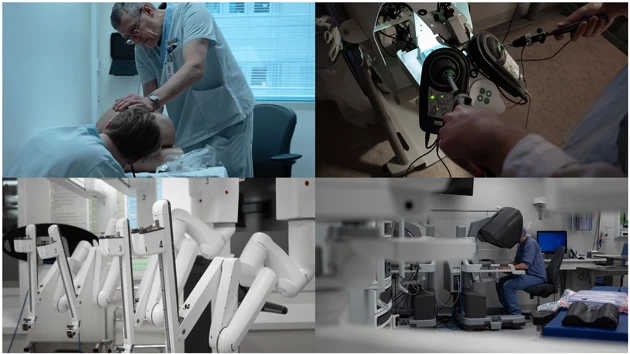
Interviews and field visits with Swedish and German surgeons, stakeholders, and facilities.
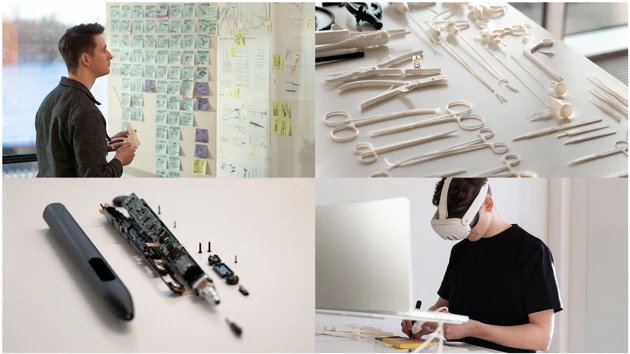
Hands-on research, concept ideation, and XR experimentation.
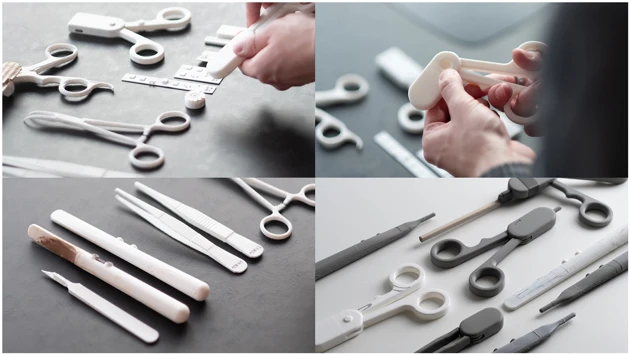
Iterative process and prototyping of core surgical archetypes.

Four equally important concept components.
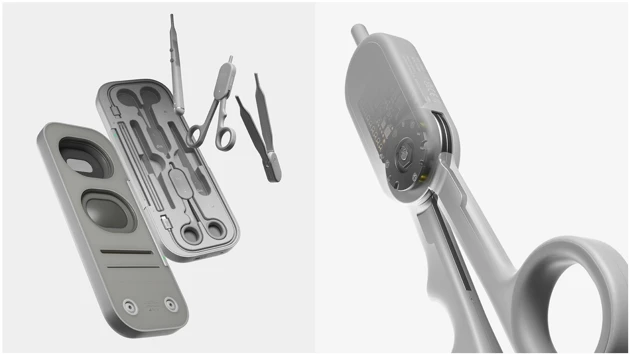
Full kit (disassembled), highlighting advanced force-feedback simulation.
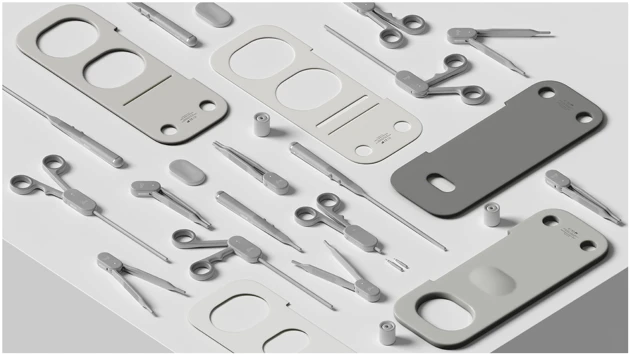
Exchangeable components of the modular system via hospital material libraries.
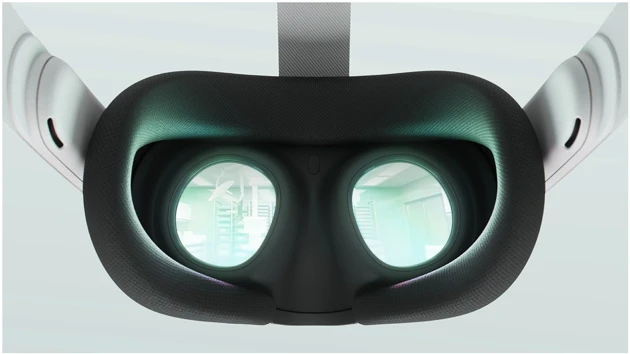
XR point-of-view of the immersive MX Surgical training space.
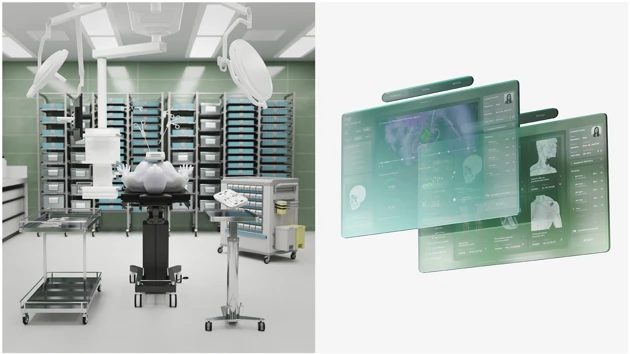
Immersive environment embedded in a collaborative and insightful platform.











